Westminster, CO Pollen and Allergy Report for Summer 2023
Pollen Allergy Trends in Westminster, CO
When is pollen lowest in Westminster, CO?

February
Lowest month total PPM
Avg. PPM
When is pollen highest in Westminster, CO?

March
Highest month total PPM
Avg. PPM
How does pollen in Westminster, CO compare to Colorado?
Westminster has a higher average PPM than the state of Colorado.
Westminster yearly avg PPM:
Colorado yearly avg PPM:
How does pollen in Westminster, CO compare to the USA?
Westminster has a lower average PPM than the USA.
Westminster yearly avg PPM:
USA yearly avg PPM:
Is pollen worse this year in Westminster, CO?
Spring 2023 was worse than spring 2022.
Spring 2023 PPM:
Spring 2022 PPM:
Average PPM in Westminster, CO
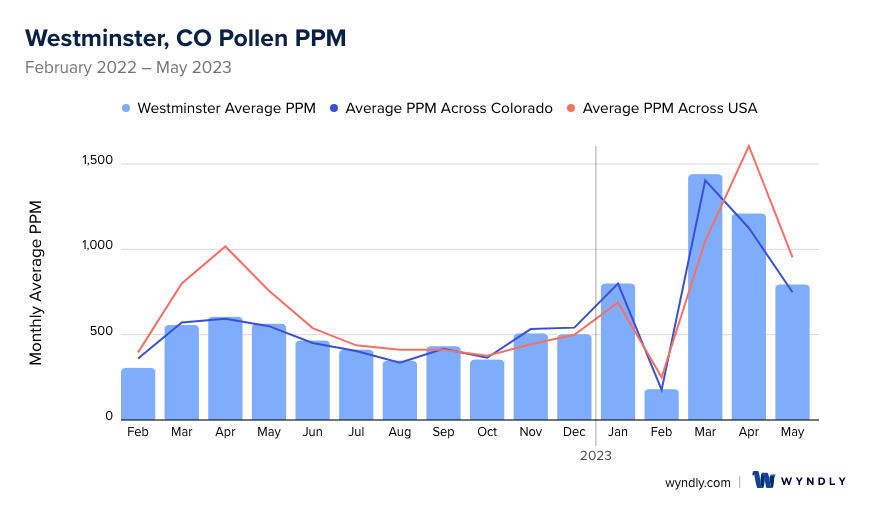
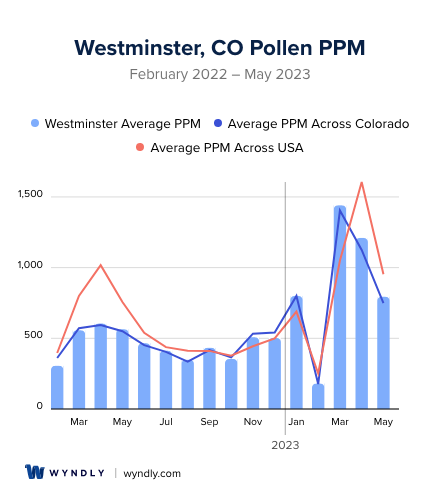
Westminster, CO Pollen and Allergy Breakdown by Month
Grass
When is grass pollen highest in Westminster, CO?
April has the highest grass pollen in Westminster, CO with an average PPM of
When is grass pollen lowest in Westminster, CO?
December has the lowest grass pollen in Westminster, CO with an average PPM of
Tree
When is tree pollen highest in Westminster, CO?
March has the highest tree pollen in Westminster, CO with an average PPM of
When is tree pollen lowest in Westminster, CO?
September has the lowest tree pollen in Westminster, CO with an average PPM of
Weed
When is weed pollen highest in Westminster, CO?
November has the highest weed pollen in Westminster, CO with an average PPM of
When is weed pollen lowest in Westminster, CO?
February has the lowest weed pollen in Westminster, CO with an average PPM of
Westminster, CO Pollen Monthly Breakdown by Pollen Type
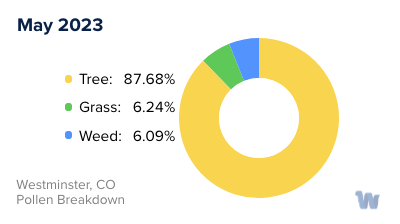
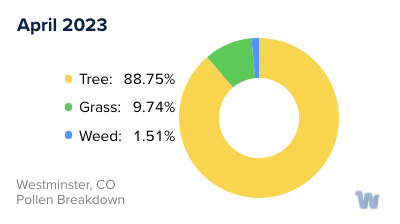
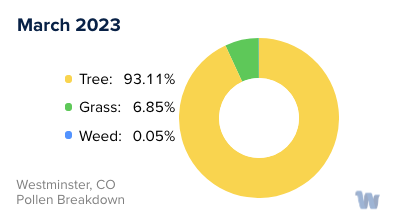
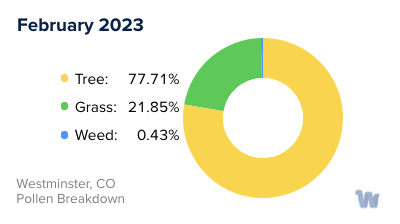
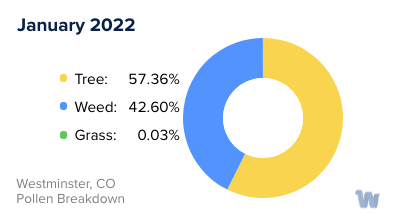
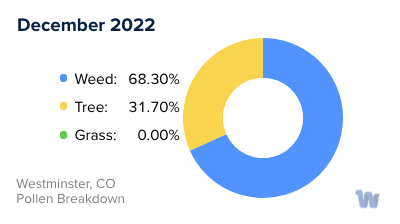
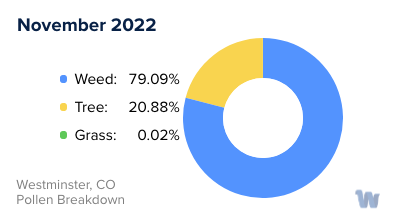
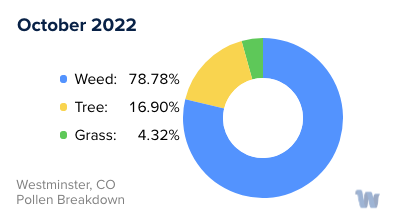
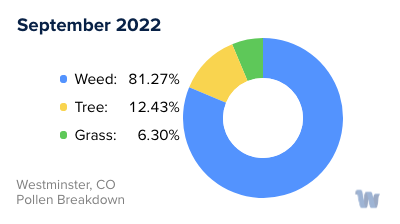
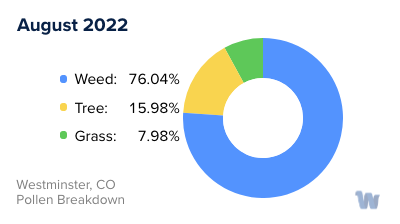
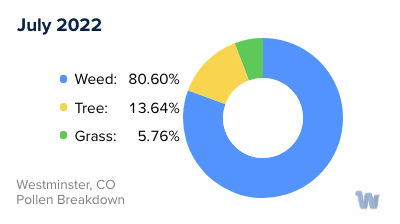
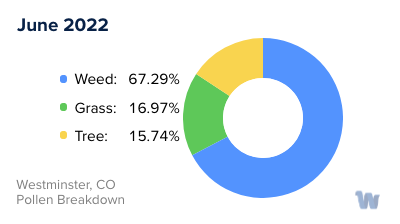
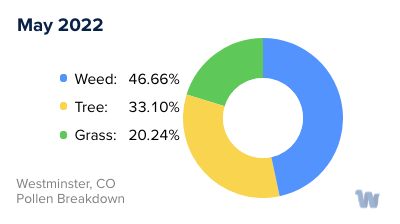
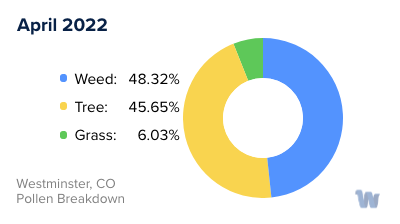
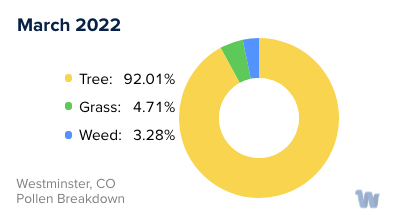
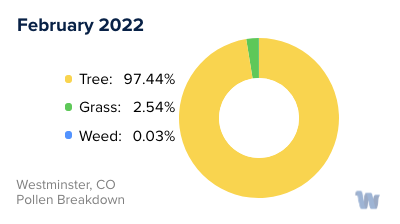
Pollen and Hay Fever in Westminster, CO
In the picturesque city of Westminster, Colorado, nestled between the stunning Rocky Mountains and the expansive plains, pollen allergies and hay fever are quite common. These conditions, often used interchangeably, are characterized by sneezing, runny or stuffy nose, itchy or watery eyes, and sometimes an itchy throat. They are the body's response to airborne pollen from trees, grasses, and weeds.
In Westminster, the tree pollen season starts in the spring, around late March and extends through June. The most prevalent trees releasing pollen during this time are cottonwood, ash, and juniper. These trees, with their bountiful branches, paint the city in hues of green and pink but also unleash a cloud of pollen.
As the tree pollen season winds down, the grass pollen season picks up. From late May to early July, grasses like Kentucky bluegrass, which is widely used in landscaping across Westminster, begin to release pollen. This is often the time when people with sensitivities to grass pollen experience an increase in allergy symptoms.
Lastly, the weed pollen season commences in late summer and continues through the fall, typically from August to October. Ragweed is the major culprit during this season. Its pollen is highly allergenic and can travel great distances on the wind, affecting even those who don't live in close proximity to the plants.
Being informed about the different types of pollen and the seasons in which they are prevalent in Westminster, Colorado, can help residents and visitors alike to better understand and anticipate the cycles of pollen allergies and hay fever. Knowledge of these patterns allows for better planning of outdoor activities to reduce exposure during high pollen times, ensuring a more comfortable and enjoyable experience in this beautiful city.

